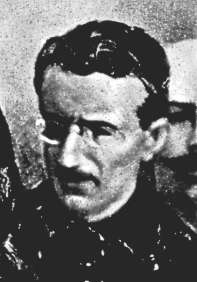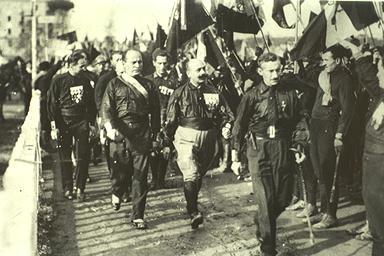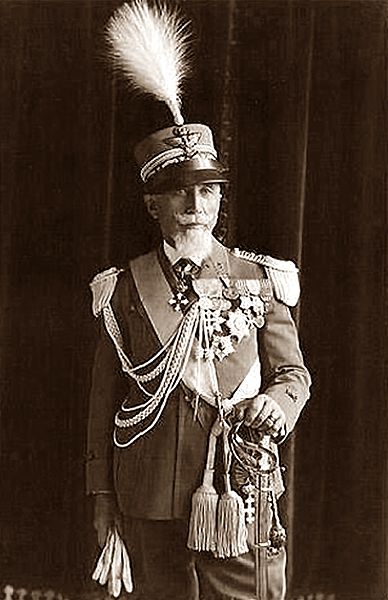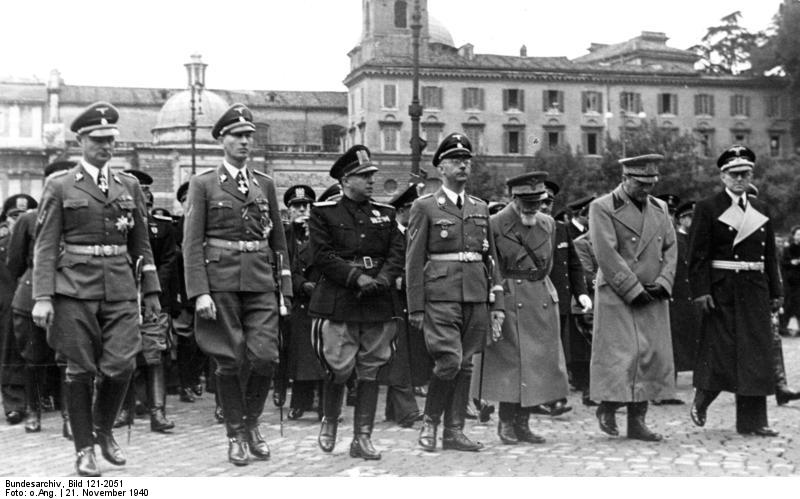<Back to Index>
- Syndicalist Leader Michele Bianchi, 1883
- Marshal of Italy Emilio De Bono, 1866
PAGE SPONSOR


Michele Bianchi (22 July 1883 – 3 February 1930) was an Italian revolutionary syndicalist leader. He was among the founding members of the Fascist movement. He was widely seen as the dominant leader of the leftist, syndicalist wing of the National Fascist Party, and one of the most influential politicians of the regime before his succumbing to tuberculosis in 1930. He as well was one of the grand architects behind the "Great List" (la listone) which secured the parliamentary majority in favor of the fascists.
Bianchi was born in Belmonte Calabro (Calabria), in southern Italy.
He studied law at the University of Rome, and dedicated himself from early on to journalism. He became a member of the Italian Socialist Party (PSI), and editor of the Party newspaper Avanti!, presiding over the socialist branch in Rome. A delegate to the Bologna Congress in 1904, he backed the syndicalist line enforced by Arturo Labriola.
In 1905, Bianchi renounced his position at Avanti! and took over leadership of the Gioventù socialista (paper of the Federazione dei giovani socialisti — youth wing of the PSI). The anti - militarist campaign he led had him imprisoned, then forcibly settled in Genoa. Bianchi adapted to his new residence, and became head of the Ligurian Labor Chamber, as well as editor of the revolutionary paper Lotta socialista.
In 1906, after backing several workers' riots, Bianchi expressed his pacifism in front of the PSI leadership, and was not universally welcomed. Transferred to Savona, he played a crucial part in the events that led the syndicalists out of the PSI — in between the PSI Bologna Congress of 1907 and the first Syndicalist Congress in July 1908 (in Ferrara).
After being arrested several times and traveling throughout Italy, Bianchi became editor of La Scintilla in 1910; he launched the idea that PSI and syndicalists should reunite on electoral lists for the expected administrative elections. He was outvoted, and resorted to expressing his views solely through the paper — which he turned into a daily, the backer of several local proletarian revolts in 1911.
However, Bianchi was forced by the tight budget to shut down La Scintilla, not before he was yet again arrested in Trieste for attacking Giovanni Giolitti as instigator of the Italo - Turkish War. He benefited from an amnesty and returned to Ferrara, where he created and headed the paper La Battaglia (a failed attempt to gain a seat in the elections of 1913). Bianchi moved to Milan, becoming a major figure of the Milanese Syndical Union and the Unione Sindacale Italiana (USI).
Michele Bianchi's attitude during World War I mirrored that of Benito Mussolini: he became an active supporter of Italy's entry into the conflict, and advocate of irredentism.
In 1915, when Italy joined the Entente Powers, Bianchi volunteered for service and became a junior officer — first in the Infantry, then in the Artillery. With the end of the war, Bianchi joined Mussolini's Fasci italiani di combattimento, and then the National Fascist Party (Partito Nazionale Fascista, or PNF). In 1921, he became the PNF secretary, and attempted to join the Fascists with other right wing movements (while authorizing the numerous violent raids carried out by the Blackshirts).
After stomping out a strike action against Fascist maneuvers, Bianchi was one of the Quattuorvirate who led the March on Rome, the pseudo - coup d'état that brought Mussolini as Prime Minister (October 1922). In the newly formed government, he was general secretary of Internal Affairs. In short time, Bianchi was dismissed as PNF leader in 1923, while joining the Grand Council of Fascism; in 1924, he was elected to the Chamber of Deputies, but resigned from his government position on 14 March.
In
1925, he was given the position of undersecretary at the Ministry of
Public Works, in 1928 the same position at the Internal Affairs one, and
on 12 September 1929 he became Minister of Public Works. Again elected
to the Chamber, his health severely worsened and he died soon after in
Rome.


Emilio De Bono (March 19, 1866, Cassano d'Adda, Province of Milan – January 11, 1944) was an Italian General, fascist activist, Marshal, and member of the Fascist Grand Council (Gran Consiglio del Fascismo). De Bono fought in the Italo - Turkish War, World War I, and the Second Italo - Abyssinian War.
De Bono was born in Cassano d'Adda. He entered the Italian Royal Army (Regio Esercito) in 1884 as a Second Lieutenant and had worked his way up to General Staff by the start of the Italo - Turkish War of 1911. De Bono would later to go on to fight in World War I, where he distinguished himself against the Austrians in Gorizia in 1916 and Monte Grappa in October 1918. In 1920, he was discharged with the rank of Major General.
During the early 1920s, De Bono helped organize the National Fascist Party. In 1922, as one of the four Quadrumvirs, he organized and staged the "March on Rome." This event signaled the start of the Fascist regime in Italy.
In the period following the march, De Bono served as Chief of Police and Commander of the Fascist Militia.
In 1925, De Bono was tried for his role in the 1924 death of the leftist politician Giacomo Matteotti. He refused to implicate his superiors and was unexpectedly acquitted in 1925. Later that year, De Bono was appointed Governor of Tripolitania in Libya.
In 1929, De Bono was appointed Minister of Colonial Affairs (also referred to as the Minister of Colonies). In 1932, King Victor Emmanuel and De Bono visited Eritrea and found, they said, a peaceful, loyal, and contented colony.
In November 1932, at Mussolini's request, De Bono wrote a plan for an invasion of Ethiopia. The plan outlined a traditional mode of penetration: a relatively small force would move gradually southward from Eritrea, establish strong bases and then advance against increasingly weak and disorganized opponents. The invasion De Bono envisioned would be cheap, easy, safe -- and slow.
Mussolini separately involved the Army in planning and, over the next two years, the Army developed its own massive campaign which would involve five to six times the number of troops required by De Bono. In 1934, Mussolini pulled the uncoordinated plans together into one that emphasized the military's idea of full scale war.
In 1935, De Bono became Supreme Commander of the Italian operation against Ethiopia during the Second Italo - Ethiopian War. In addition, he was Commander - in - Chief of the forces invading from Italian held Eritrea, on what was known as the "northern front." De Bono had, under his direct command, a force of nine Army divisions in three corps: The Italian I Corps, the Italian II Corps, and the Eritrean Corps.
On October 3, forces under De Bono's command crossed into Ethiopia from Eritrea. On October 6, his forces took Adowa, officially avenging the humiliating 1896 Italian defeat. Soon thereafter, De Bono entered the historically significant city of Axum, riding a white horse. After these initial triumphs, however, De Bono's advance slowed.
On November 8, the I Corps and the Eritrean Corps captured Mek'ele. This was to be the limit of Italian advances under De Bono. Increasing world pressure on Mussolini brought a need for fast, glittering victories; he was not prepared to hear of obstacles or delays.
On November 16, De Bono was promoted to Marshal of Italy (Maresciallo d'Italia),
but Mussolini grew ever more impatient with the invasion's slow
progress and, on December 17, De Bono was relieved of his command via
State Telegram 13181 (Telegrama di Stato 13181), which stated that, with the capture of Mek'ele five weeks before, his mission had been accomplished. His place was taken by Marshal Pietro Badoglio, and De Bono was appointed Inspector of Overseas Troops.
In 1940, De Bono commanded a southern defense corps headquartered in Sicily and was opposed to the Italian entry into World War II. But he kept a low profile and, in 1942, he was appointed Minister of State.
On July 24 and July 25, 1943, De Bono was one of the members of the Fascist Grand Council who voted to oust Benito Mussolini when Dino Grandi carried out a coup d'état, in collaboration with Pietro Badoglio and King Victor Emmanuel III. This led to the dictator's downfall, arrest, and imprisonment.
Later in 1943, Mussolini was rescued during the Gran Sasso raid and returned to power by Nazi Germany. He was set up in northern Italy by the Germans as the "Duce of the Nation" of a new Italian Social Republic (Repubblica Sociale Italiana, or RSI). Upon his return to power, Mussolini had De Bono and others who voted against him arrested. He then had Alessandro Pavolini try them for treason at Verona in what became known as the "Verona trial." De Bono was convicted in a trial where the outcome was known prior to its start.
On January 11, 1944, the 77 year old De Bono was executed by firing squad at Verona. He was shot along with Galeazzo Ciano, Luciano Gottardi, Giovanni Marinelli and Carlo Pareschi. Ciano was the Italian Minister of Foreign Affairs and Mussolini's son - in - law. Gottardi was the former president of the Fascist Confederation of Industrial workers. Marinelli was the former chief of the Fascist militia and Pareschi was the former Agriculture Minister. The only person on trial who escaped from capital punishment was Tullio Cianetti, the Minister of Corporations. Cianetti was sentenced to thirty years by the RSI judges.